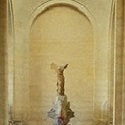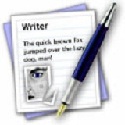 Planning your first web site can seem like a daunting task, and in a way, it is. Careful and practical planning can make the job much easier – not to mention, more fun to boot! In the first step (Part I of this series) , you were advised to list the contents of your sitemap. This is critical, since it will lead you to decide on the Structure (Part II) for this listed content. Once these are done, it is time to begin to think about the mood, the context – the genre of your content.
Planning your first web site can seem like a daunting task, and in a way, it is. Careful and practical planning can make the job much easier – not to mention, more fun to boot! In the first step (Part I of this series) , you were advised to list the contents of your sitemap. This is critical, since it will lead you to decide on the Structure (Part II) for this listed content. Once these are done, it is time to begin to think about the mood, the context – the genre of your content.
Genre gives Direction for the Site’s Mood
Most sites, even personal ones that feature your varied interests, are built around a particular mood that is reflected in the colors chosen, the fonts used, the images displayed and the actual content of the site. It is very helpful, especially for the inexperienced web builder to select a particular genre and to stick with it, in order to create a site that reflects the designer’s intent.
This initial genre work will help you to then move on to decide the metaphor, navigation schemes and other aesthetic components of the design – all aspects that are best planned while keeping your content in mind. If you are creating a website about babies, all of the above are going to be quite different than ones you would choose to present a topic like tattoos. Both fit a totally different genre, so each would require a different presentation style. This is especially important if you are hoping to attract a lot of visitors to your site – keep the nuance and the atmosphere of the site cohesive, and people will perceive it as ‘more professional’ in design.
What is a Genre?
Historically, the term genre has been used when classifying literature, music, art, and more recently, movies, and new media productions including web sites. All genres have distinctive style, form, and content.
Common genres that could be found in any of these mediums include:
- comedy
- drama
- romantic
- mystery
- tragedy
- autobiographical
- action/adventure
- thriller
- horror, gothic
- epic
- science fiction
- historical
- pastoral
- folklore
- children’s stories
- natural world
- self improvement
- discipline (arts, science, philosophy, etc.)
Each genre appeals to at least one particular audience or community: which is important to web site owners and designers. Seeing your site through your audience’s eyes and perceptions is critically important, if you want your site to be a success.
Working with your Genre
The best way to approach the selection or identification of your genre is to sit with pad and pen and think about your site in reverie mode. Think about what you want to share, convey, sell, or teach your audience. What genre does this content fit? Once you have identified your genre, write down your thoughts about the following:
Example
My very first web site: Dynowomyn Web Haven was created in 1998.
The specifics for that site were:
Main Topic of Site: Women’s holistic health of body, mind, heart, and spirit
Genre: Self development
Mood Suggested: Aesthetic, warmth, elegant, feminine
Metaphor Suggested: a Dynamic Woman = DynoWomyn
Color Scheme: Black background, rich gold text, buttons, main graphics, etheric glowing blue accents
Document Styles: articles for self improvement in four categories, community ICTs, artwork, ezine, awards, coaching service, webring
Intended Audience: Women from around the globe
Here is a Genre Worksheet for you to download and use as you decide on your genre and related components. Even if your content is all products or services that you want to sell, there is still a genre suggested by your goods or your talents.
Once this is done, you can begin to work on the aesthetics, navigation and number of pages that will be included in each of the major sections. Upcoming articles in this series will help you with these next steps.






